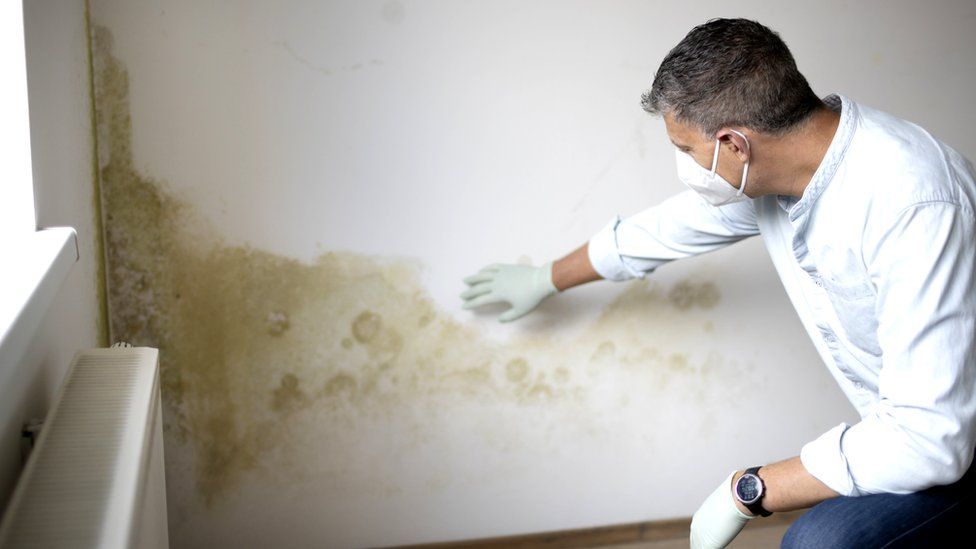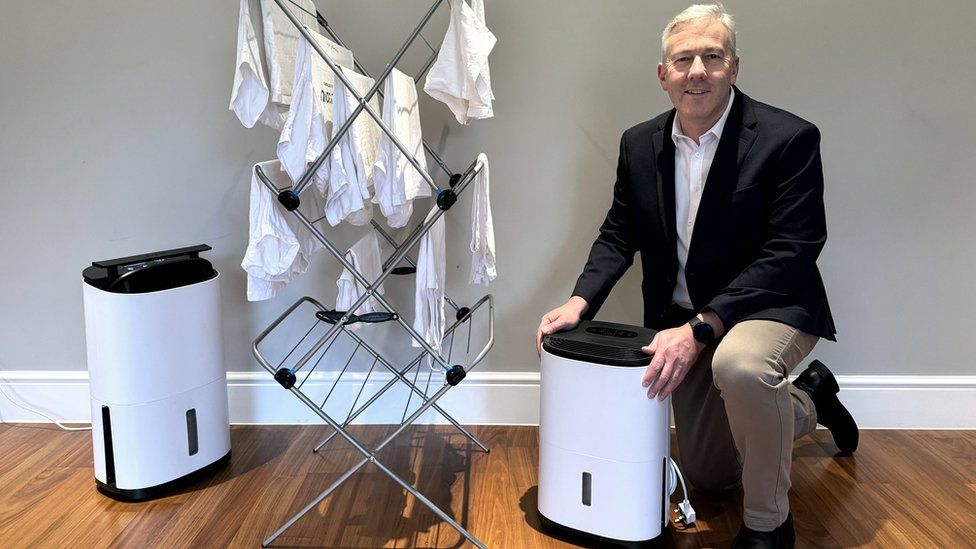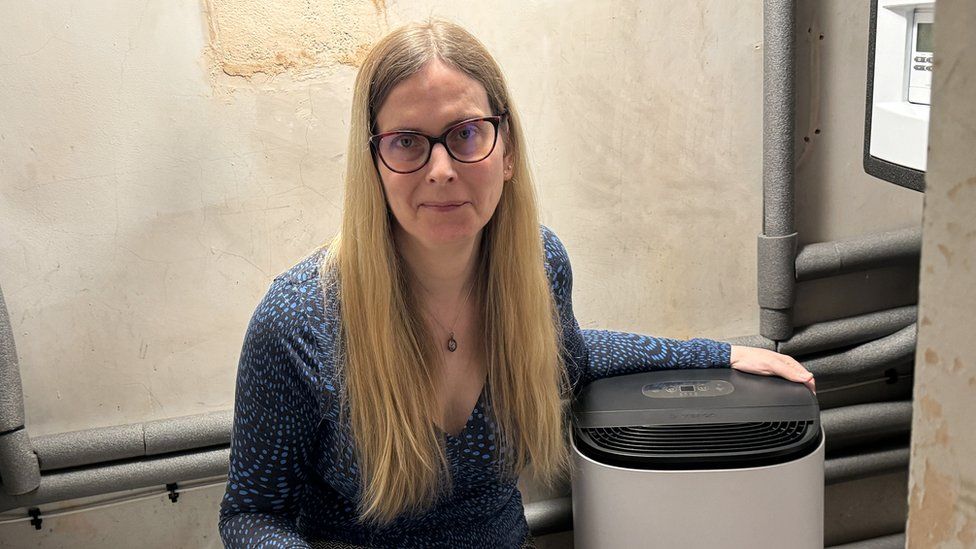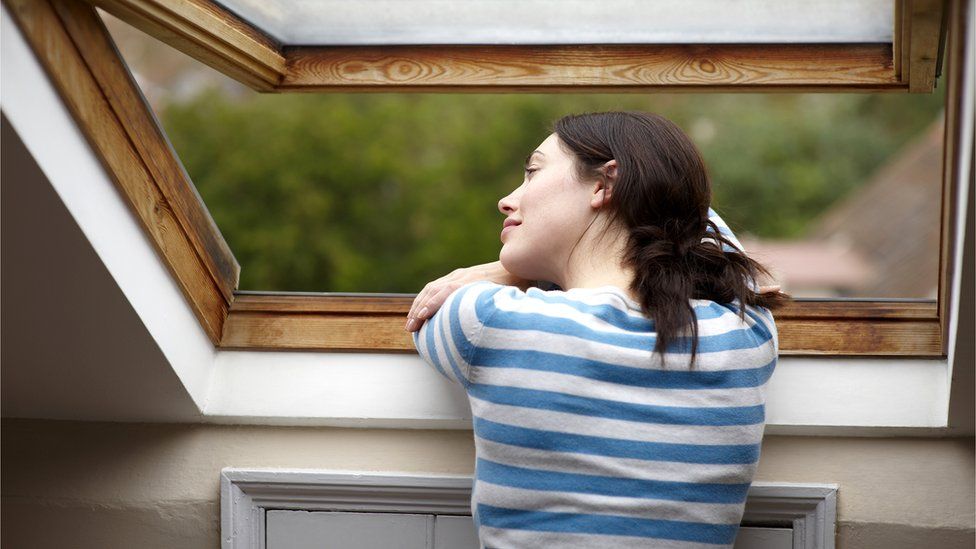Why there’s a boom for damp-busting machines

As temperatures plummeted in recent weeks, traces of mould began to spread in Kate Martin’s home. Those tell-tale black, dusty speckles first colonised the windowsill, and then took over parts of the wallpaper and nearby furniture.
“I couldn’t breathe properly, my chest hurt,” says Mrs Martin, an artist who lives in the Midlands. It was time to fire up her dehumidifier. After cleaning the mould off and letting the machine do its work, she soon noticed a difference in air quality. “We were breathing freely again.”
Because water vapour in indoor air is prone to condensing onto cold surfaces, drying this air slightly can reduce or eliminate condensation and, therefore, mould, which thrives on damp.
Mrs Martin’s house also feels warmer and easier to heat – that’s because it takes less energy to warm up dry air. Our bodies are sensitive to humidity, also, since moisture in the air encourages heat to escape from the surface of our skin.
“It doesn’t matter if you have 10 blankets, if it’s damp, you are freezing,” says Mrs Martin.
Energy prices this winter remain roughly double what they were two years ago. As a result of the energy crisis triggered by Russia’s invasion of Ukraine, people around the UK have sought low-cost methods of keeping their homes warm and dry.
This has led to an apparent boom in sales of dehumidifiers.
“Demand has been bonkers,” says Chris Michael, managing director of Meaco, a British dehumidifier brand. “We can’t keep up with it.”
Last Christmas, he says his firm had a waiting list of 20,000 people seeking a dehumidifier – the company just didn’t have enough stock. This year, he’s planned to supply 100,000 additional units, a total of 280,000, but he fears this still won’t suffice.
“We should have brought in an extra 50,000,” says Mr Michael.

Mechanical dehumidifiers work in one of two ways – either they use a refrigerant to cool down a surface inside the machine, where moisture condenses for collection, or they use a desiccant substance that draws the moisture in. This material is then dried out by a heating process and the water collected.
Good-sized units are not cheap, though, and could set you back between £150 and £350.
Refrigerant-based devices are by far the most popular, says Mr Michael. They generally cost less to run, however, because a desiccant-based dehumidifier releases some heat during operation, it might help to warm up a particularly cold space, such as a conservatory.
Given the high cost of electricity, tumble dryers have become much more expensive to use. Drying a single load of laundry could cost more than £1.50, according to the makers of energy tracking app Hugo. In comparison, a dehumidifier can help to dry clothes hung up indoors in just a few hours while only costing pennies.
Rachael Peterson, an electronics engineer who lives in Oxfordshire, uses her dehumidifier to dry out clothes hung up in an under-stairs cupboard. She does this overnight, on a cheaper electricity tariff, and says it costs less than 4p.
“The clothes are dried down there in a matter of hours,” she tells BBC News. “Everything’s dried properly.”

Prof Cath Noakes at the University of Leeds is an expert in air quality. She says it remains important to ventilate and heat your home alongside using a dehumidifier. The ideal relative humidity is roughly between 40% and 60%.
“High humidity is associated with mould and other microbial growth,” she explains. “Very low humidity, say below 40% – and definitely below 30% – is associated with things like respiratory viruses.”
Dehumidifiers don’t actually remove mould, she stresses, just some of the moisture that could encourage it. And if there are leaks or water ingress problems in a home, for example from damaged pipework or damp walls, a dehumidifier alone will not solve these issues.
Around 15 years ago, engineer Ray Galvin at the Cambridge Institute for Sustainability Leadership set up a study in which his friend used a dehumidifier to tackle moisture problems in a 1930s three-bedroom semi-detached house in Cambridge. It remains one of very few scientific studies documenting the efficacy of dehumidifiers in British homes.
“It just seemed to me a really important thing to try,” says Dr Galvin. “Nobody had worked it out in that sort of systematic way before.”
The results showed that running the device for roughly four hours each night consumed 1 kilowatt of electricity and removed more than a pint of water from the air, on average. The occupants said that this solved their condensation problems, which had mostly affected their windows.

If you can’t afford a dehumidifier, there are other ways of reducing high moisture levels indoors. Dr Galvin suggests the German approach of Stosslüften, or “shock ventilation”, which involves opening multiple windows as wide as possible for several minutes, to allow for a significant changeover of air inside, and then closing them again.
Dr Galvin says this won’t cool down the house because the interior walls will retain latent heat. It will, however, significantly reduce relative humidity.
Prof Noakes also recommends this method, noting that it can be particularly effective right after cooking or washing – activities that tend to raise relative humidity.


Dehumidifiers are also useful in more extreme situations. British manufacturer Ecor Pro makes professional models that are “predominantly” used to dry out homes that have been affected by flooding or severe leaks, according to the company’s technical consultant Jerry Gibbs.
This can take a long time. “We tend to be talking about weeks rather than days,” he says.
Dehumidifier manufacturers have, over the years, made improvements to motors, compressors and fan blade design to reduce the noise produced by these devices, adds Mr Gibbs. And Mr Michael at Meaco says his firm’s quietest models emit about 35 decibels – equivalent to the noise a quiet fridge would make.
Mrs Martin has noticed the sound made by her dehumidifier – but it doesn’t bother her. It is a small price to pay for the comfort provided by the device, she says. Given that damp is such a persistent and dangerous problem in British homes, she even recommends that dehumidifiers be supplied by landlords for tenants.
“It helps everyone,” she says. “It’s going to help maintain the property.”

